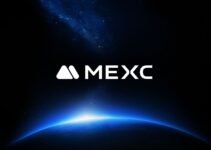Overview
Pi Network has released a regulatory disclosure aligned with the European Union’s Markets in Crypto-Assets (MiCA) framework, signaling a potential pathway for broad EU market access. The filing outlines governance structures, token mechanics, and trading timelines that could pave the way for public exchange listings across the European Economic Area. Market participants reacted quickly, with PI token prices rising near 10% on the day of the disclosure.

What the MiCA-Aligned Filing Says
The filing functions as a formal informational document consistent with MiCA requirements and includes several core elements investors and service providers expect from a compliance-focused disclosure.
- Clear identification of the token as a crypto-asset subject to MiCA rules.
- Technical overview of the network, including non-custodial wallet arrangements and self-custody mechanics.
- Token distribution background, confirming allocation via mining and participation rather than a traditional initial coin offering.
- Statements on monetary policy: no planned supply adjustments, buybacks, or in-built value-protection mechanisms.
- Governance and legal separation between the mobile application operations and the entity responsible for token issuance.
- Estimated timelines for public offering and the start of trading activity in relevant jurisdictions.
Key Dates and Timelines
The disclosure provides concrete dates associated with the filing process and intended market roll-out. These include a publication date for MiCA documentation and a near-term public offer window. Such dates are commonly used by issuers to coordinate regulatory reviews and exchange onboarding in the EU.
Regulatory Context: MiCA and 2025 Market Dynamics
MiCA, which took effect EU-wide after 2024, remains the primary regulatory framework governing crypto-assets in the European Union. By 2025, market infrastructure and service providers across Europe have increasingly relied on MiCA compliance as a baseline for exchange listings, custody arrangements, and institutional engagement.
Key factors shaping the 2025 landscape include:
- Heightened demand from institutional investors for assets with transparent governance and formal disclosures.
- Greater scrutiny from regulators on issuer transparency, operational separation, and custody arrangements.
- Growth of regulated investment vehicles in European markets that provide institutional channels for exposure to digital assets.
- Exchange risk assessments that prioritize documented adherence to MiCA organizational and conduct requirements.
Market Reaction and Price Movement
Following the disclosure, the PI token experienced a notable intraday uptick, with market data indicating an increase of roughly 10% and trading levels near $0.24 during the immediate reaction period. Such moves reflect investor attention on regulatory milestones that materially affect an asset’s access to EU liquidity pools and institutional channels.
Price reactions to regulatory announcements are often driven by market expectations around:
- Potential for wider exchange listings in EU-regulated venues.
- Increased tradability and liquidity when assets meet compliance thresholds.
- Perceived reduction in regulatory friction for institutional participation.
European Market Access and Institutional Signals
In 2025, several digital-asset projects have used MiCA-aligned documentation as a precursor to formal exchange listings or to support the launch of regulated products in European markets. These disclosures are intended to provide transparency on risks, tokenomics, and operational structures to both retail and institutional stakeholders.
Notably, the filing highlights prior exposure of the token through a regulated investment vehicle listed on a Swedish exchange earlier in 2025. Such products have provided European investors with an on-ramp to the token through a familiar regulatory wrapper, while also creating an early pool of institutional and retail demand.
Additionally, the filing states plans for ecosystem support, including a multi-million-dollar venture fund intended to accelerate development and adoption. The stated size of this fund underscores a strategic effort to enhance liquidity and to support commercial integrations that could underpin longer-term token utility.
Token Mechanics and Custody
A central theme of the disclosure is the project’s non-custodial stance. According to the document, users will retain control of private keys through a dedicated wallet, a structure designed to meet MiCA’s requirements for self-custody and to clarify legal responsibilities between application operators and token issuance entities.
The filing also reiterates that the token distribution history did not involve a conventional sale, but rather distribution through participation and network activity. This detail shapes both regulatory categorization and market perceptions of supply dynamics.
Implications for Exchanges and Market Infrastructure
For exchanges and trading platforms evaluating potential listings, a MiCA-aligned disclosure is an important signal of readiness. It typically facilitates the compliance reviews required by EU-regulated trading venues and can expedite onboarding processes.
MEXC and other global platforms continue to monitor regulatory developments closely. Assets that demonstrate documented adherence to applicable regulations and offer transparent operational structures are prioritized in our ongoing asset review processes. For more information about listing criteria and our approach to regulatory compliance, visit https://www.mexc.com.
What Investors Should Watch Next
Market participants should monitor several next steps that will determine the practical impact of the filing:
- Regulatory feedback and formal approvals from relevant EU member state authorities.
- Announcements from licensed EU trading venues regarding potential listing decisions or admission timetables.
- Liquidity developments in secondary markets and the emergence of formal order books following any listing.
- Operational updates related to wallet software, custody support from third-party providers, and any partner integrations that facilitate fiat on-ramps.
2025 Outlook: Compliance, Liquidity, and Institutional Adoption
As 2025 progresses, regulatory clarity continues to be a pivotal driver of adoption and liquidity for crypto-assets in Europe. Projects that align with MiCA standards position themselves to attract greater institutional participation and to access regulated investor channels.
Trends to consider through the remainder of 2025 include:
- Growing issuance of regulated investment products to bridge traditional finance and digital-asset markets.
- Increasing use of formal disclosures as de facto prerequisites for EU exchange listings.
- Heightened emphasis on custody and operational separation to satisfy conduct and consumer-protection mandates.
- Acceleration in ecosystem fundraising and strategic partnerships aimed at building real-world use cases.
Conclusion
The MiCA-aligned disclosure represents an important milestone for the project by articulating a regulatory roadmap and addressing key investor concerns about governance, custody, and token distribution. Market reactions have been positive in the short term, reflecting expectations that regulatory alignment will improve access to European liquidity and institutional channels.
While regulatory filings are a critical step, they are part of a broader process that includes regulator reviews, exchange admissions, and market adoption. Investors and market participants should continue to follow official announcements and monitor secondary-market liquidity as the situation evolves through 2025.
Disclaimer: This post is a compilation of publicly available information.
MEXC does not verify or guarantee the accuracy of third-party content.
Readers should conduct their own research before making any investment or participation decisions.
Join MEXC and Get up to $10,000 Bonus!
Sign Up


